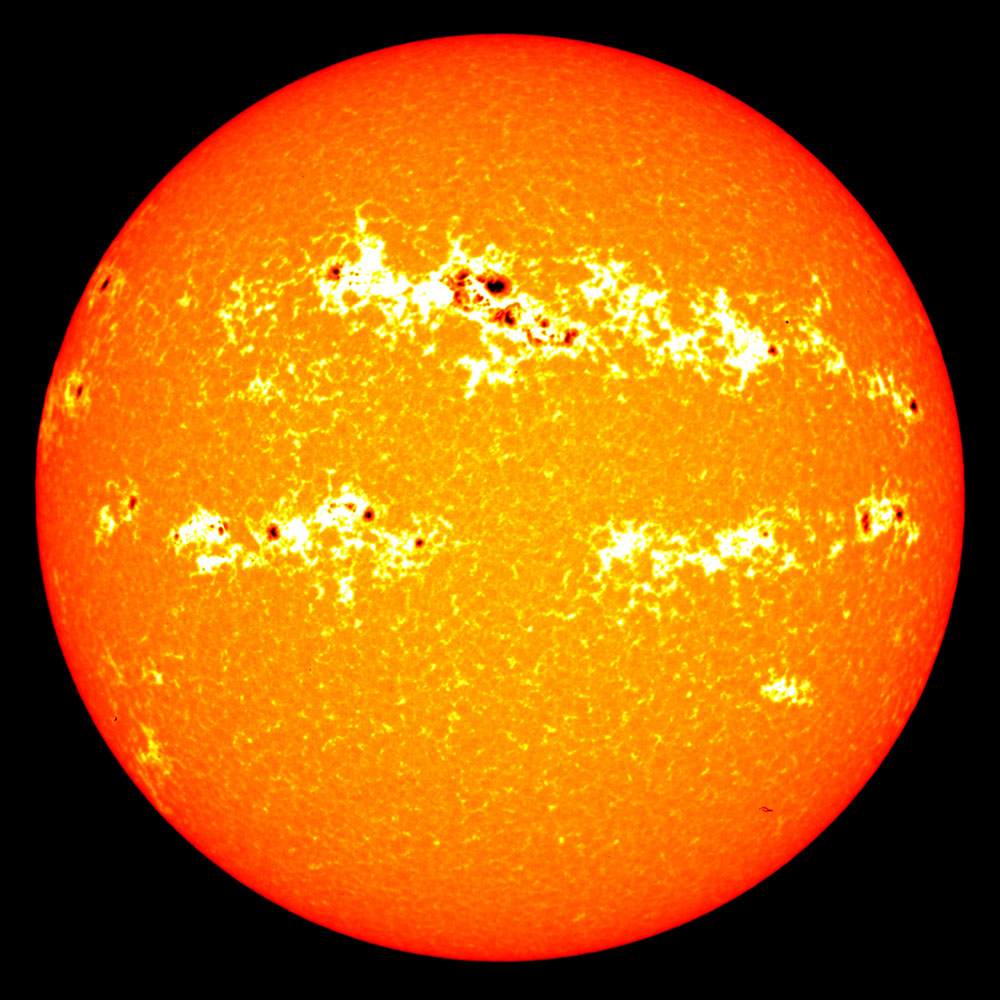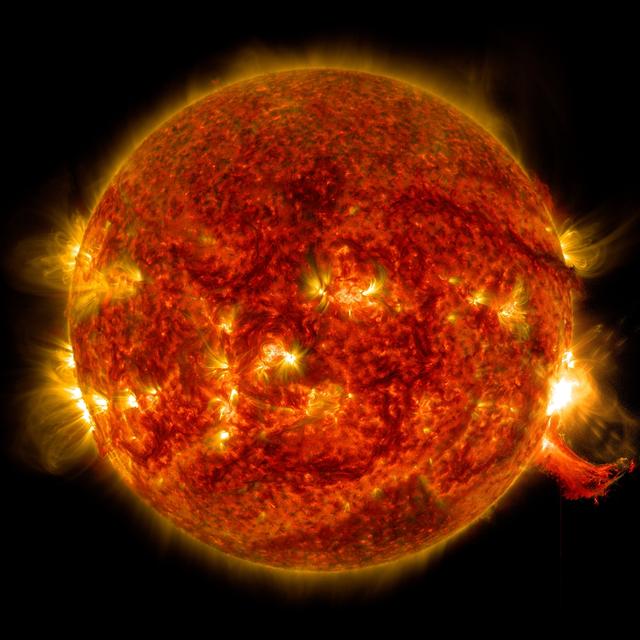Welcome to the Sun
The Sun is a star, a massive ball of gas situated at the centre of the Solar System. It is the only star in the Solar System. All of the planets in the Solar System orbit The Sun and are held in place by its pull of gravity. The Sun produces huge amounts of heat and light and is the key reason why life is able to exist on Earth. It is also by far the largest object in the Solar System. It is 109 times wider than Earth and is so big that every single other object in the entire Solar System could easily fit inside of it.

Earth is the third planet from The Sun and orbits at a distance of almost 150 million kilometres (93 million miles). This distance is humongous, so large in fact that it would take an aeroplane travelling non-stop at its usual speed around 19 years to reach it!
In space terms, The Sun is actually extremely close to Earth. The next nearest star to The Sun is Proxima Centauri, which is around 40 million million kilometres away. This is about 268,000 times further away from Earth than the Sun is. It means that the aeroplane we were talking about earlier would take over 5 million years to reach Proxima Centauri it was able to fly to it non-stop.

The Sun is hot! Really hot. Although it doesn't have a solid surface as it is a ball of gas, the temperature at its visible outer layer is a scorching 5,500 °C (9,900 °F).
The Sun generates its energy through a process called nuclear fusion. This is where hydrogen is turned into helium, the result of which is many many explosions of heat and light. These processes take place at the Sun's core, where the temperature is likely to be a mind-boggling 15 million °C (27 million °F). By the time the heat and light reaches the outer edges of the Sun, it has cooled to the temperature mentioned earlier of °C (9,900 °F). It is thought that it takes 170,000 years for the energy to travel from the centre of the Sun to reach outer edge.
 Image Credit: NASA
Image Credit: NASA
Sun Spots are regions on the Sun which shine less brightly than other parts. They appear like dark spots on its surface. Sun spots are cooler than other parts of the Sun, with temperatures ranging between 2,700 °C and 4,200 °C (4,900 °F to 7,600 °F). They're still extremely hot though!
Sun Spots are caused when the heat and light energy travelling from the centre of the Sun to its surface is prevented from escaping. This results in those patches being darker and cooler.
The Sun goes through periods of having lots of spots to hardly having any at all. This is because the Sun goes through cycles of activity. Sometimes it's very active, other times it isn't. This cycle of activity is called the solar cycle and each cycle lasts for about 11 years.
 Image Credit: NASA
Image Credit: NASASolar flares are huge explosions of energy from the visible surface of The Sun. They send vast amounts of heat, light and other particles from the Sun across the Solar System.
Solar flares occur in a process similar to what causes sun spots. However, as sun spots happen when energy is prevented from escaping The Sun, solar flares occur when energy that is trapped with the sun is suddenly allowed to escape.
Solar flares or coronal mass ejections (CME) cause beautiful light shows on Earth called aurora. These can be seen regions near to the North and South poles and are known as the Northern Lights or Southern Lights. They happen because the gases blasted from the Sun from a Solar Flare or CME interact with gases in Earth's atmosphere and cause it to glow all kinds of colours.





